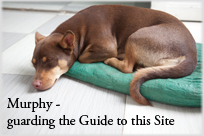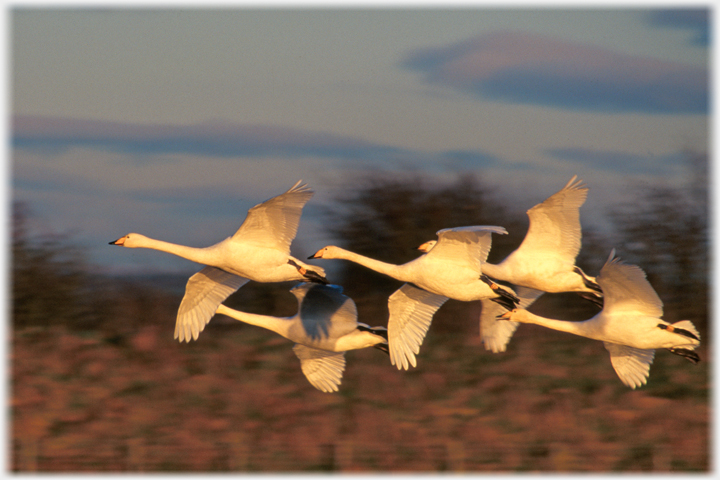 Whooper swans on a December afternoon at Caerlaverock
Whooper swans on a December afternoon at Caerlaverock
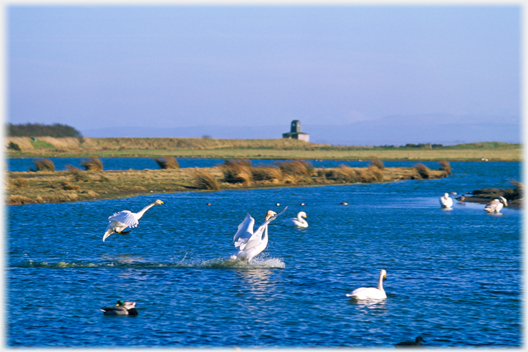 Whoopers landing on the Folly Pond, the old Saltcot hide
Whoopers landing on the Folly Pond, the old Saltcot hide
is in the background The River Nith marks the old boundary between Kirkcudbrightshire and Dumfriesshire, on each side of its mouth stands a wildlife reserve. To the east are the lands of Scottish Natural Heritage with its SNH Caerlaverock Nature Reserve
 within which the Wildfowl and Wetlands Trust has its own
WWT Caerlaverock Reserve
within which the Wildfowl and Wetlands Trust has its own
WWT Caerlaverock Reserve
 - yes it causes confusion! And to the west beyond the village of Southerness is the Royal Society for the Protection of Birds'
RSPB Mersehead Reserve
- yes it causes confusion! And to the west beyond the village of Southerness is the Royal Society for the Protection of Birds'
RSPB Mersehead Reserve
 .
WWT and RSPD each have some three miles of the Solway coast.
.
WWT and RSPD each have some three miles of the Solway coast.
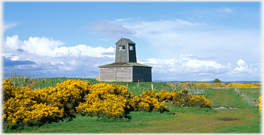 The old Salcot hide with the gorse at its height which was left...
The old Salcot hide with the gorse at its height which was left...
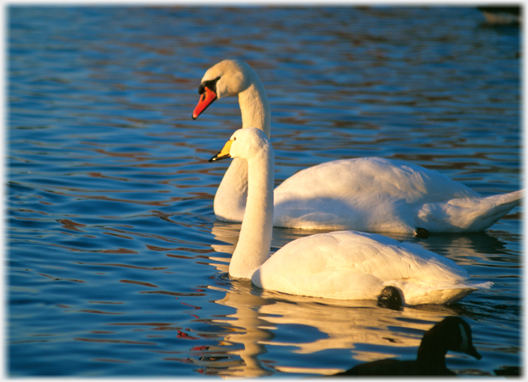 Mute and Whooper showing the main physical differences in their heads and size - but not the key difference that their names aptly indicate
Mute and Whooper showing the main physical differences in their heads and size - but not the key difference that their names aptly indicate
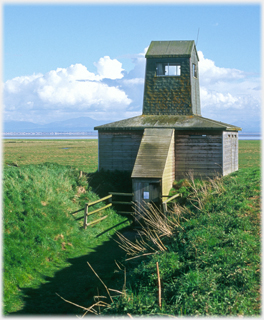 ...from the days before WWT took over the site when this was a SNH building. It had become badly in need of refurbishment...
...from the days before WWT took over the site when this was a SNH building. It had become badly in need of refurbishment...
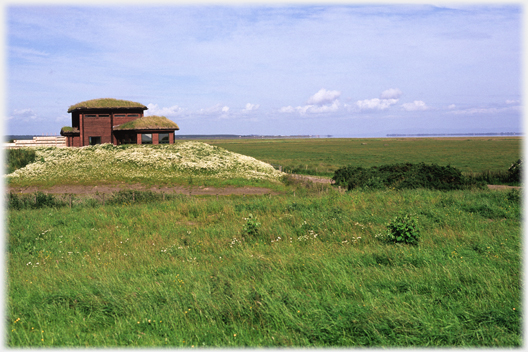 The new Saltcot hide looking out over the merse
The new Saltcot hide looking out over the merse
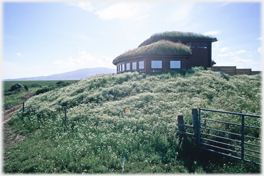 ...and was demolished and replaced with this state of the art £100,000 model
...and was demolished and replaced with this state of the art £100,000 model
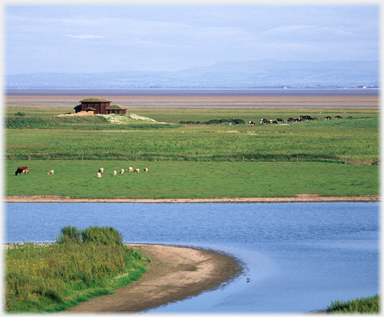 The Folly Pond, Saltcot Hide, Merse and Lake Hills
The Folly Pond, Saltcot Hide, Merse and Lake Hills
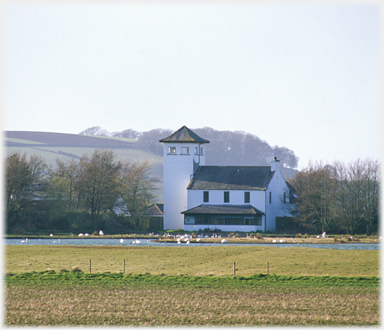 Eastpark Farmhouse which can be rented by visitors
Eastpark Farmhouse which can be rented by visitors
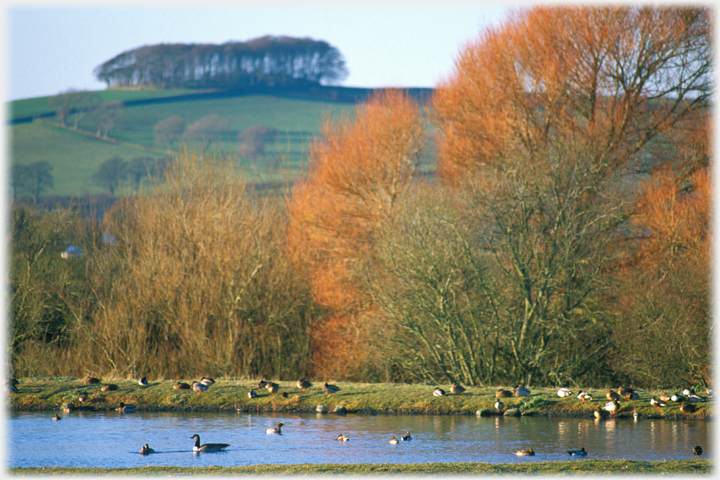 Above the Whooper pond with the golden willows chosen by
Peter Scott
Above the Whooper pond with the golden willows chosen by
Peter Scott
 (to the right) who founded WWT (the Wildfowl & Wetlands Trust) in 1946.
(to the right) who founded WWT (the Wildfowl & Wetlands Trust) in 1946.
Beyond is Ward Law on the hill which is the site of a Roman Fort. The hides at Caerlaverock offer good opportunities to see a range of ducks and geese close to, here there are...
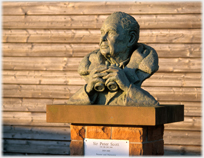
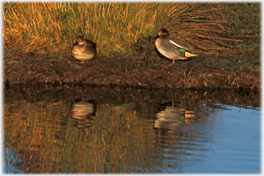 ...teal...
...teal...
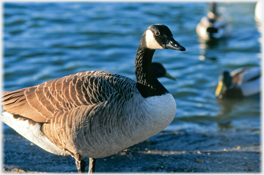 ...Canada geese with less white faces than barnacles...
...Canada geese with less white faces than barnacles...
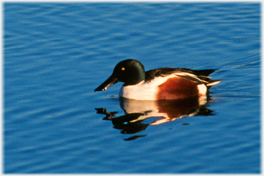 ...a male shoveler...
...a male shoveler...
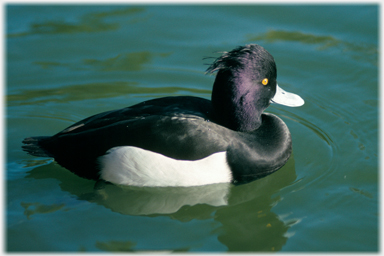 ...a tufted duck...
...a tufted duck...
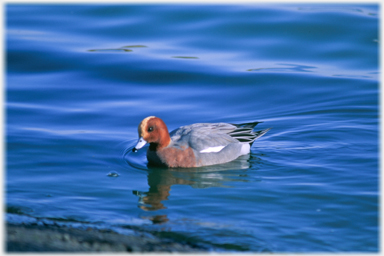 ...a male wigeon...
...a male wigeon...
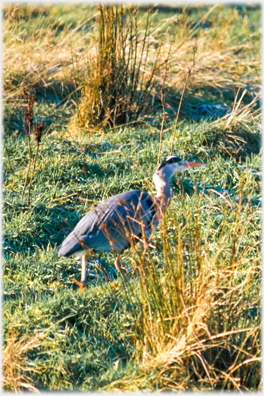 ...and a heron stalking
...and a heron stalking
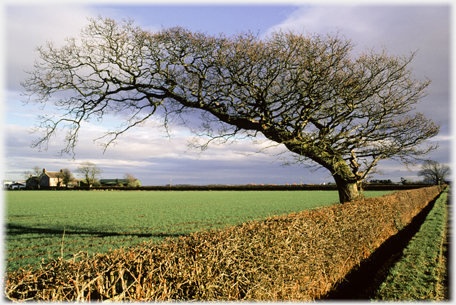 Most of the lands on these reserves are flat salt marsh - merse - so there is nothing to stop the prevailing wind which blows one way
Most of the lands on these reserves are flat salt marsh - merse - so there is nothing to stop the prevailing wind which blows one way
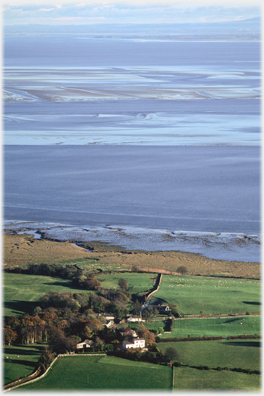 ... with its shallow water and mud banks, here seen from up on Criffel above Drumburn
... with its shallow water and mud banks, here seen from up on Criffel above Drumburn
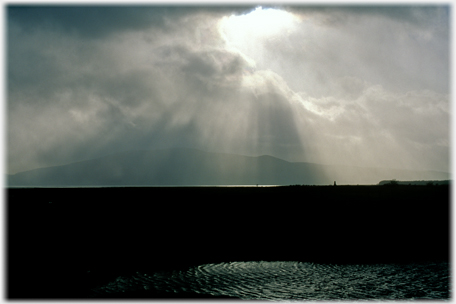 Looking from the WWT reserve across the estuary of the Nith to the hill Criffel. Below the hill, and to the picture's left, is the Mersehead Reserve. Both reserves front onto the Solway...
Looking from the WWT reserve across the estuary of the Nith to the hill Criffel. Below the hill, and to the picture's left, is the Mersehead Reserve. Both reserves front onto the Solway...
 Barnacles feeding at the Mersehead Reserve - their white faces showing even at a distance
Barnacles feeding at the Mersehead Reserve - their white faces showing even at a distance
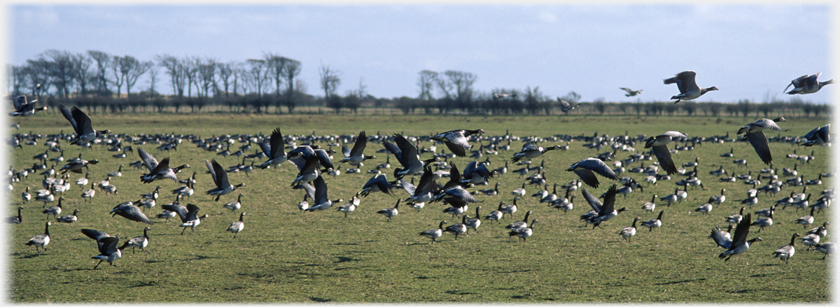 A flock beginning to take off
A flock beginning to take off
 And a flock in flight with the Solway as background
And a flock in flight with the Solway as background
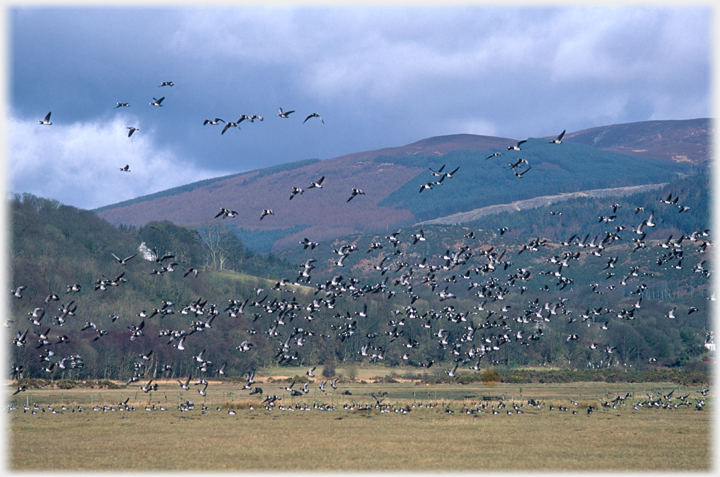 These great flocks of barnacles and whoopers, moving between and within the reserves, inexorably draw large numbers of humans to flock to the spectacle
The next page
follows the path that our migrating birds take to the North Atlantic. Many species make this trip besides the Whoopers and Barnacles. One of the most delightful of these migrants is the Arctic tern, which besides nesting in the UK, also nests in its thousands on the Faroe Islands.
These great flocks of barnacles and whoopers, moving between and within the reserves, inexorably draw large numbers of humans to flock to the spectacle
The next page
follows the path that our migrating birds take to the North Atlantic. Many species make this trip besides the Whoopers and Barnacles. One of the most delightful of these migrants is the Arctic tern, which besides nesting in the UK, also nests in its thousands on the Faroe Islands.
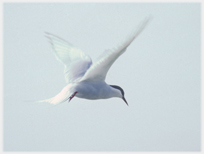

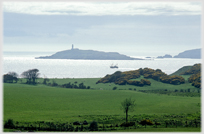 The last page was about the islands off the Kirkcudbright coast
The last page was about the islands off the Kirkcudbright coast
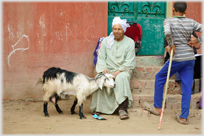 A page about vet's protection of animals in Cairo
A page about vet's protection of animals in Cairo
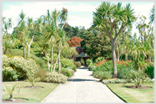 Logan Gardens - a page about a reserve for plants at the other end of Galloway
Logan Gardens - a page about a reserve for plants at the other end of Galloway
